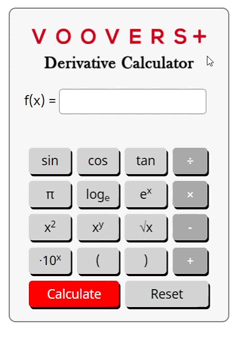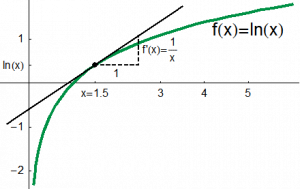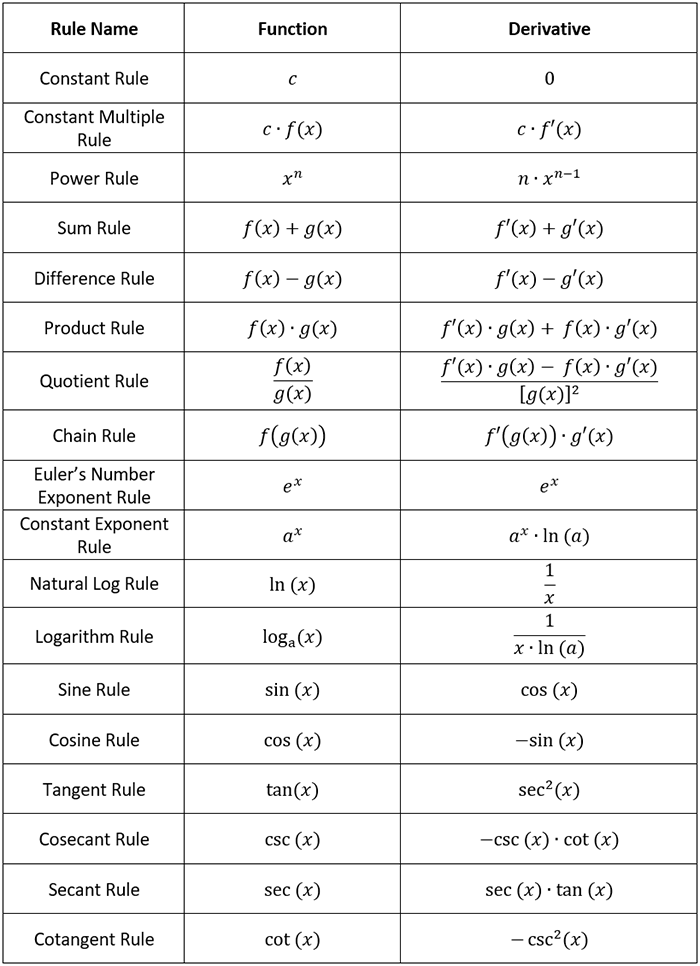Related Content
Derivative Calculator


To get unlimited answers, .

Derivative Lesson
Lesson Contents
Definition of a Derivative
In calculus, the derivative of a function tells us how much a change of input affects the output. It is equivalent to the instantaneous rate of change of the function and slope of the tangent line through the function.
For a function f, we notate the derivative as f’, where the symbol ‘ is called “prime”. For a function of x notated as f(x), we notate the derivative “f prime of x” as f'(x). We may also notate the derivative with respect to the variable. In the case of a function f(x), the derivative of f with respect to x is notated as df⁄dx.

How to Calculate a Derivative
There are many ways to calculate a derivative. However, there is a set of common tools for differentiating a function known as the derivative rules. There are five general derivative rules and numerous specific derivative rules.
The table below provides the five general derivative rules for functions of x. You can replace x with any other variable applicable to the function being differentiated. The general rules can be applied to any situation that contains the type of function specified by the rule.
Table of Common Derivative Rules

How the Calculator Works
The derivative calculator above is powered by a library of code called a Computer Algebra System (CAS). All of the calculator’s code is written in the language JavaScript (JS) which runs entirely in your internet browser, allowing instant results to be computed (no page refresh or communication with the server required).
Once the “calculate” button is clicked, your function is submitted to the derivative JS function which formats it before feeding it to the CAS. The CAS performs the differentiation, the sends the result back to be re-formatted into LaTeX (a math processing/visualization language). Finally, the LaTeX is rendered on the page as your answer.


